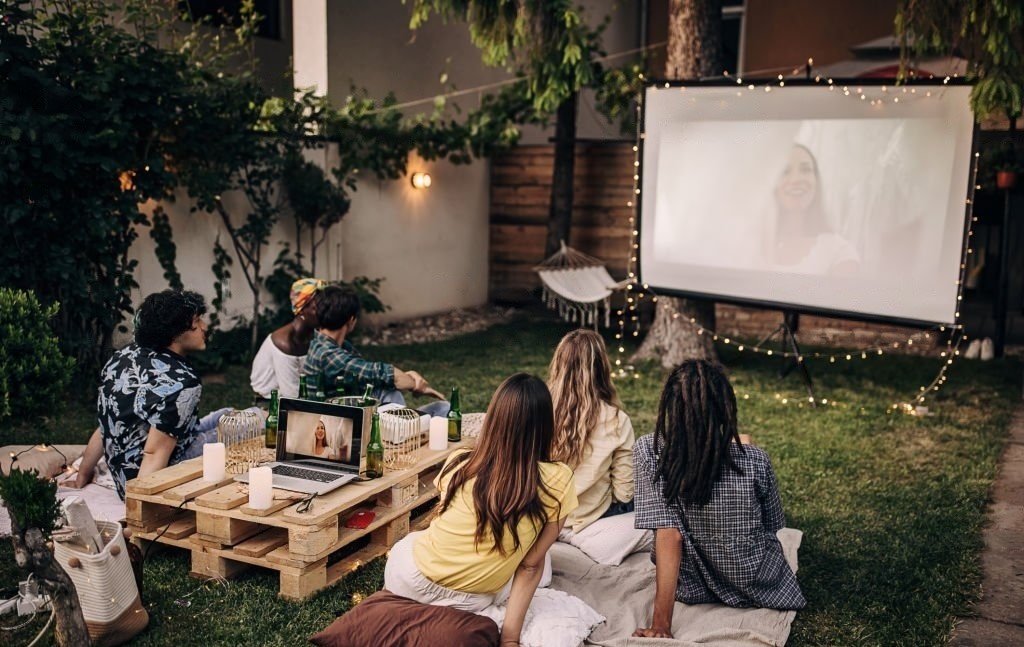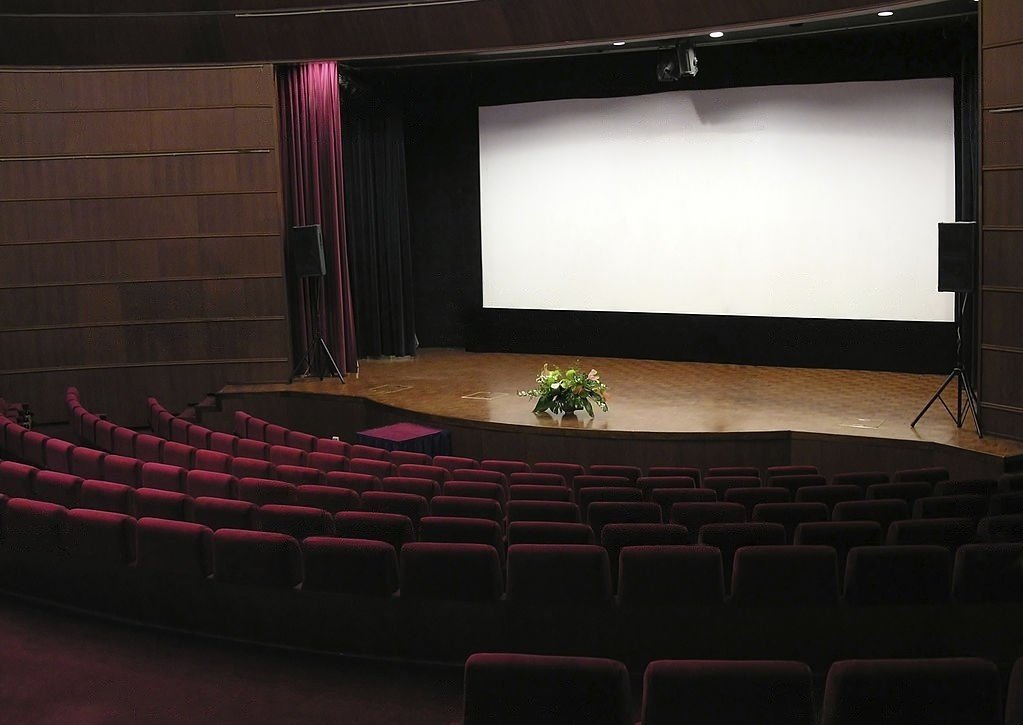Are you curious to know how big is a 100-inch Projector Screen? You’ve come to the right spot to learn all about it.
This article gives you an idea of the measurements of a 100-inch projector screen with a 16:9 aspect ratio are 87 x 49 inches. And for the 4:3 aspect ratio, it is 80 x 60 inches.
Don’t worry! This article will explain the dimensional calculations of a 100-inch projector that fits you most.
Let’s start our topic.
Table of Contents
The Common Dimensions of How Big is a 100-inch Projector Screen?
The dimensions for a 100-inch Projector Screen size usually depend on the projector’s aspect ratio. The explanation behind this is that projectors’ dimensions are calculated longitudinally.
As a result, they frequently need various conversion ratios relying upon the projector’s current dimensions. Furthermore, you can use these dimensions to calculate other factors like the area and distance of a projector screen.
For example, a 16:9 aspect ratio has measurements of 87 inches in width and 49 inches in height. And for a 4:3 aspect ratio, a 100-inch projector display will measure 60 inches high and 80 inches wide.

100-inch Projector Screen with a 16:9 Aspect Ratio
A 16:9 aspect ratio is considered the most suitable projector screen for the movie audience. The movie screen is designed for sharp, high-resolution images and viewing experiences from different positions.
Your first consideration should be your convenient projector space. Since the size of an ideal projector display can be significantly affected by the area available.
A portable projector screen is foldable, so you can easily store and carry it without taking up space. A triangular prism design offers more stability for a comfortable viewing experience.
For the width and height of a 16:9 aspect ratio of a 100-inch screen, multiply 100 by 0.8716 and 0.4903, respectively. You obtain a width of 87.16 inches and 49.03 inches in height.
For example, a 100-inch screen with a 16:9 aspect ratio needs a projection distance between 9.7 feet and 15.7 feet. Screen sizes less than 100 inches are more useful if you cannot afford a large room.
100-inch Projector Screen with a 4:3 Aspect Ratio
A 4:3 aspect ratio is the most suitable projector screen for business, home, office, and classroom presentations. Its wide viewing area provides you with universal projection.
The primary considerations are the peculiarities related to space requirements and quality. This pull-down wall projector screen is lightweight, portable, and has a robust design.
Movable Projections Ideal for anywhere, heavy-duty tripod screen stand has a 100″ diagonal (80″ x 60″) with a satin white top that diffuses light in all directions.
A projector screen with a 4:3 aspect ratio has dimensions of 80 inches (203.2 centimeters) in width and 60 inches (152.4 centimeters) in height. The display features 120-degree viewing angles.
The standard black background on-screen material 1.1 GAIN prevents light refraction. Black borders on all four sides improve the picture contrast.
Getting The Perfect Projector Screen Size

The proper projector screen size selection depends on the space and where you have to install it. With projector screens, you may experiment with various sizes and aspect ratios.
You need to consider your room’s length, the distance from the projector, and where to sit towards the screen area. You require good projector instruction.
Understanding the screen’s dimensions can help determine whether it will fit your room and satisfy your requirements.
Types of Projector Screens That You Need to Know
The essential peculiarities of the projector are that it is easily portable, takes less up and less space, and gives an excellent audio sound experience.
However, it’s the right time to choose the size of a projection screen. To know how big is a 100-inch projector screen? You need to consider the following types individually.
- Portable 100-inch Projector Screen
Portable projector screens are usually used for mobile presentations and meetings that you can quickly move from one place to another.
They were enabling you to guarantee the recurring different setups. Your required fixes were provided through a portable projection screen.
You must have one of the portable projector screens if you need a projection device that has yet to be permanently mounted to the wall or ceiling.
- The Tripod 100-inch Projector Screen Type
A tripod 100-inch projector screen is one of the most popular types of portable projector screen. It isn’t confined to a single area and is organized into two parts: the projector screen and the tripod stand. You can open it up just like an umbrella.
For a muti-locational user, the tripod screen projector will be ideal. You may quickly organize your training and meetings in the location of your choice; when finished, pack up and go.
The fact that it is your friendly pocket is one of the best advantages you have ever experienced. In addition to being relatively affordable, it ensures you the finest potential resolution.
- The Floor Pull-up Projector Screen
The Floor Pull-up Projector Screen is another kind of portable projector that rises off the ground is the projector screen. It is much lighter and easier to set up and take down.
It appears in a single piece and doesn’t need to be combined. A handle is attached to the bottom of the screen for simple access.
The projector panel has a springing roller on the back that elevates together with the screen to give it stability when it is at its highest position.
- The Wall or Ceiling-Mounted Projectors
It is aimed at a fixed place and is set up once for ongoing use. It is not meant to be transported from one place to another and can be used without touching. Mounted screens have a longer service life due to this factor.
They can either be fixed in place and stretched out as needed or retractable and stretched out when required but rolled back into the casing when not.
Mountable projection screens are frequently attached to the wall or ceiling depending on the installation dynamics. Unlike the electric and manual types, the fixed frame type cannot be rolled back into its housing after usage.
- The Electric Projector
The Electric Projector Screen is the most modern projector screen, offering a professional display for the presentation users. Its sleek design and single location give advantageous storage.
If you have a large and semi-permanent area, then an electric projector is the most suitable option for you. The electric screen can be wall and ceiling-mounted
Depending on the model, an electric projector screen may use 100 or 220 volts of power. The audience won’t be able to locate it in the room if we retract it into the ceiling.
Many electric projector screens contain a remote control, which makes using them a breeze. To suit your needs in any area, electric projection screens are available in tiny to enormous sizes.
- The Manual Projector
The Manual Projector Screen is the best option for less-income users. The bottom projection screen has a lever that you may use to move up and down the screen.
Like electric projection screens, it can be placed on walls, ceilings, and hidden ceilings with a permanent placement.
Without a motor, they are considerably lighter than electric projectors. Manual Projector is set up permanently. You can use it anytime you wish and fold it back if needed.
- The Fixed Frame Projector
Fixed Frame Projector Screens may be the most prestigious among all projector screens. These projection systems can be applied commercially but often appear among the most luxurious home cinemas.
These screens are a constant in the space and cannot be raised or lowered. As they regularly move upward and downward during use, these screens stay the longest in home theatres.
These panels don’t have bending and oscillation screens. Since large projector screens offer the most options for screen material, they also frequently have the finest picture quality.
Frequently Asked Questions
What is a good size for a projector?
The most common screen sizes range from 100 to 120 inches (2.5 to 3 meters) diagonally, although the size of your space will play a significant role in this. This is around 2.2m to 2.65m wide (based on a widescreen 16:9 projector), which justifies using a projector rather than a professional display.
Can I use a projector as a TV?
Any projector can be used as a TV, however you might require additional equipment. You might be able to use your projector as a TV right out of the box if it has built-in
apps. A streaming device, cable box, or TV tuner can all be connected to your projector.
Is a 100-inch projector screen big enough?
It relies on several elements, like the size of the room, the projector’s brightness, and the viewing distance. The 100-inch projector screen will appear significant in a space that is 150 square feet. A 100-inch projection screen will seem small in a 500-square-foot area.
What is the difference between 100 and 120 projector screens?
A vast 120-inch screen, using a 16:9 aspect ratio, is 105 inches wide and 59 inches tall. A 120-inch projector is 32% larger than a 100-inch screen; as a result, you must stand a great distance away to observe a 120-inch screen properly.
What size room do you need for a 100-inch projector screen?
A room size of 170 to 275 square meters will be needed for a display that is 100 inches. Based on a 100-inch projector screen, it is the most effective viewing distance. More crucially, you’ll require a room longer than 17 feet.
Conclusion
In a nutshell, the size of a 100-inch projector screen depends on the area and location where it will be mounted. This article has supplied you with dimensional details on 100-inch projector screen size and related topics. Depending on the space you have, select the right portable projector size from a less expensive price range. I think that this article will give you a wonderful experience.

